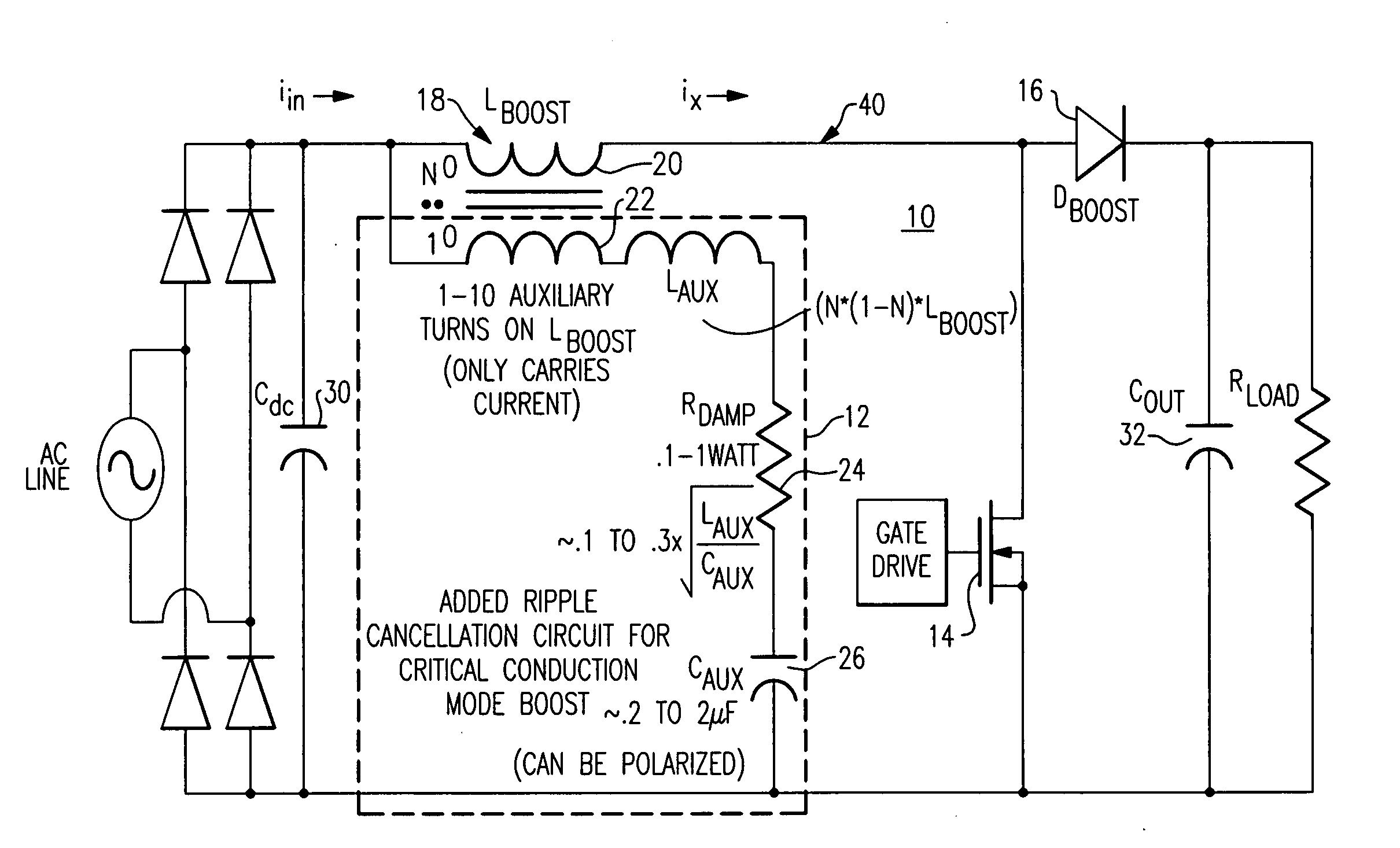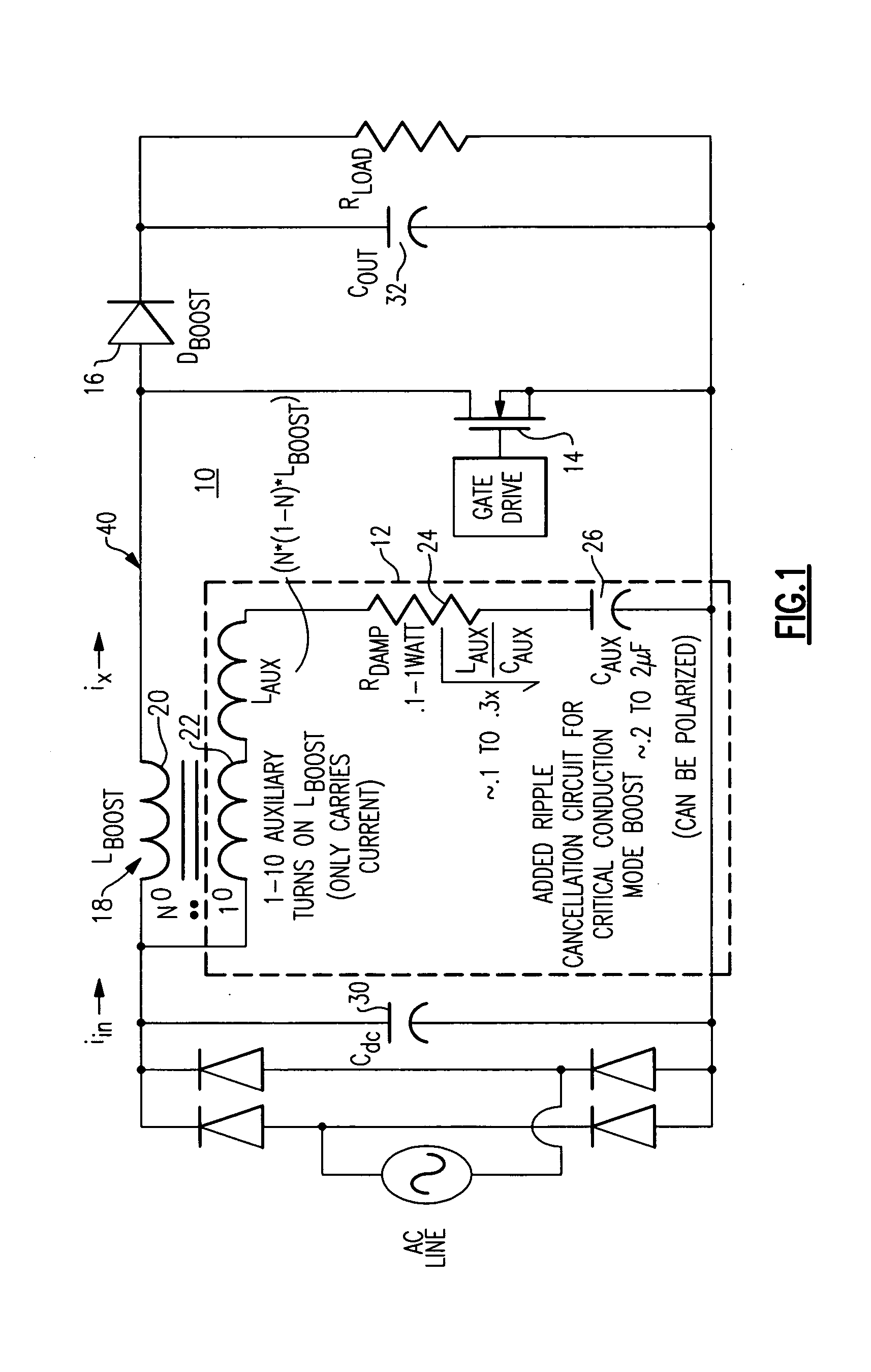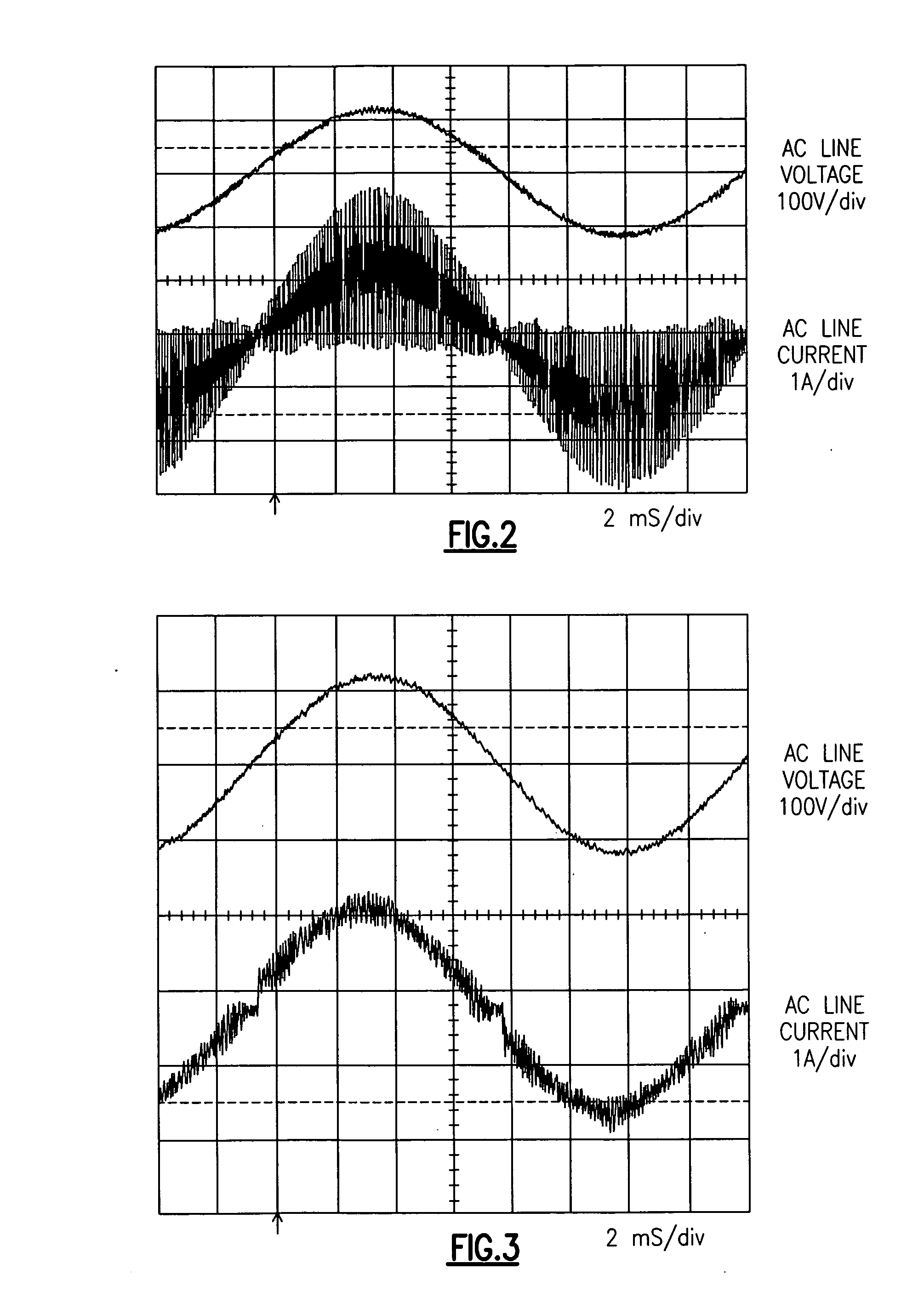Boost converter input ripple current reduction circuit
- Summary
- Abstract
- Description
- Claims
- Application Information
AI Technical Summary
Benefits of technology
Problems solved by technology
Method used
Image
Examples
Embodiment Construction
[0016]FIG. 1 illustrates a boost converter 10 including a boost inductor value reduction circuit 12 according to one embodiment of the invention. The boost inductor value reduction circuit 12 is a lightweight, inexpensive and compact ripple cancellation circuit when compared to traditional filter structures. Boost inductor value reduction circuit 12 operates to create a high frequency current signal that substantially cancels the high frequency ripple current conducted back to the AC line input side of the boost converter 10 that is generated by the boost converter 10 switching components. Boost converter 10 switching components can be seen to include a MOSFET 14 and a boost diode 16, according to one embodiment.
[0017]Although boost converter 10 is depicted as having an AC line input, the present embodiments are not so limited; and it shall be understood that the principles described herein apply equally well to a boost converter having a DC input source.
[0018]Boost inductor value r...
PUM
 Login to View More
Login to View More Abstract
Description
Claims
Application Information
 Login to View More
Login to View More - R&D
- Intellectual Property
- Life Sciences
- Materials
- Tech Scout
- Unparalleled Data Quality
- Higher Quality Content
- 60% Fewer Hallucinations
Browse by: Latest US Patents, China's latest patents, Technical Efficacy Thesaurus, Application Domain, Technology Topic, Popular Technical Reports.
© 2025 PatSnap. All rights reserved.Legal|Privacy policy|Modern Slavery Act Transparency Statement|Sitemap|About US| Contact US: help@patsnap.com



